Ice research
Ice – an anterior and posterior, radiopaque, light cured nanohybrid composite.
Performance
- Sarkar N. Corrosive-Wear and Related Properties of ICE and ROK LSU School of Dentistry, 1100 Florida Avenue, New Orleans, LA 70119.
- Ice, The Dental Advisor, Volume 21, No.6 2004.
- Damiani, G Duva, G Merlati, E Bruno, Legame tra sistemi adesivi smalto-dentinali e compositi : valutazione sperimentale (Dentine-enamel adhesives and composite bond: an experimental study), Dental Cadmos 2005; vol.73, 10:39-50
- Lee Y, Powers J. M.; Color changes of resin composites in the reflectance and transmittance modes; Dental Materials 23 (2007) 259-264.
- de Araujo Silva Gusmao G. M. A et al.; The influence of storage time and pH variation on water sorption by different composite resins; p60-65, Indian Journal of Dental Research, 24(1) 2013, Federal University of Pernambuco, Brazil.
- Sadeghi M et al.; The influence of Surface Polish and Beavages on the Roughness of Nanohybrid and Microhybrid Resin Composites; Journal of Dental Biomaterials 2016;3(1), Shiraz University.
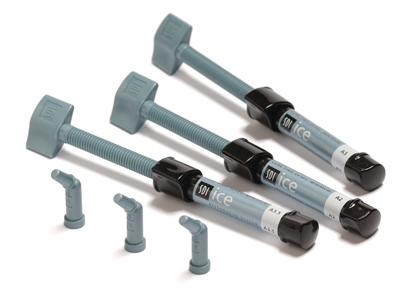
Performance
Sarkar N. Corrosive-Wear and Related Properties of ICE and ROKLSU School of Dentistry, 1100 Florida Avenue, New Orleans, LA 70119.
The aim of this study was to evaluate the resistance to corrosive wear of ICE and ROK and data were compared those of three popular brands, POINT 4 (Kerr-Sybron), Esthet (Caulk) and Supreme (3M/Espe). The corrosive wear had been simulated in two steps:
A. CORROSION – Samples were exposed to 0.1 N NaOH (Sodium hydroxide) solution enriched with OH- at 60oC for two weeks. They were then washed and dried at 60oC. Each was measured for (i) Mass-loss (gravimetrically) (ii) Si-loss (ICP-AE) and (iii) Degradation depth (microscopically). The degrade surface of each brand was also characterised by scanning electron microscopy (SEM).
B. WEAR – Test composites were filled into ceramic discs and polished to a flat surface. Samples were then corroded as above. Corroded specimens were abraded in a tooth-brushing machine. The wear depth was measured relative to the ceramic disc.
Results:
|
Material |
CORROSION |
WEAR |
|||
|
Mass Loss (%) |
Si-loss (ppm) |
Degradation (µm) |
Abrasive Wear (Control) (µm/hr) |
Corrosive Wear (Degraded) (µm/hr) |
|
| ICE | 1.83 + 0.21 | 409 + 5 | 42 + 2 | 76 + 6 | 182 + 22 |
| ROK | 2.63 + 0.19 | 19 341 + 45 | 62 + 4 | 70 + 4 | 191 + 16 |
| POINT 4 | 1.91 + 0.05 | N/A | 63 + 5 | 146 + 15 | 184 + 26 |
| ESTHET | 1.48 + 0.03 | N/A | 13.5 + 0.7 | 79 + 17 | 178 + 9 |
| SUPREME | 9.36 + 0.15 | 1885 + 66 | 195 + 11 | 72 + 9 | 399 + 31 |
It is apparent from the above table that different brands exhibit different degrees of resistance to corrosion and wear. SEM examination of ICE’s degraded surface revealed a matrix that is unattacked during corrosion exposure. Similar degradation features were seen on the surface of ROK, POINT 4 and Esthet. In contrast, degraded Supreme surface exhibited the presence of interpenetrating cracks and debonding at the filler-matrix interface.
From the results, it is expected that ICE and Rok will perform as well as, if not better than, Point 4 and Esthet in a clinical situation.
Performance
Ice, The Dental Advisor, Volume 21, No.6 2004
Ice is a light –cured, radiopaque, microfilled hybrid resin composite for both anterior and posterior direct restorations. The material is designed to have high translucency to improve blending with tooth structure.
Instructions for use and packaging were well received by consultants. Among the most popular features were the match of the cured composite to the shade guide and the very good final polish. The translucency of the material was rated good to very good and the blending with tooth structure received good to excellent ratings from all consultants – a four stars rating.
Performance
Damiani, G Duva, G Merlati, E Bruno, Legame tra sistemi adesivi smalto-dentinali e compositi : valutazione sperimentale (Dentine-enamel adhesives and composite bond: an experimental study), Dental Cadmos 2005; vol.73, 10:39-50
This study evaluates the adhesion quality of composite restorations bonded to one-step (self-etching systems) and two-step (“total-etch”) adhesive systems. Study uses dye penetration test and stereomicroscopy for analysis.
Ice and Stae were among the materials used by the authors to represent the two steps adhesive systems. It was found that two-step systems represent the best compromise between bond strength and quickness of use.
Performance
Lee Y, Powers J. M.; Color changes of resin composites in the reflectance and transmittance modes; Dental Materials 23 (2007) 259-264.
Objectives: The objective of this study was to evaluate the changes in color and color co-ordinates after accelerated aging of resin composites depending on the measuring modes of reflectance and transmittance.
Methods: Color of seven resin composites (1- mm thick specimens) was measured in the reflectance mode and in the transmittance mode. After the baseline color measurement, the specimens were aged for total energy of 150 kJ/m2. Color change after aging was calculated in the reflectance mode and in the transmittance mode. Based on the data of A2 shade composites, the influence of measuring mode on the color change (?E*ab) and changes in three color coordinates (?L*, ?a* and ?b*) after aging was analysed by ANOVA (p<0.01).
Results: Measuring mode influenced ?E*ab, ?L* and ?a* values. There were significant correlations between the color changes measured in the reflectance mode and in the transmittance mode (r=0.91).
Results suggest that Ice has the least colour shift of the seven materials tested.
Performance
de Araujo Silva Gusmao G. Mario et al; The influence of storage time and pH variation on water sorption by different composite; p60-65, Indian Journal of Dental Research, 24(1) 2013,Ferderal University of Pernambuco, Brazil.
Aim: To assess the influence of storage time and pH cycling on water sorption by difeerent composite resins.
Materials: Nine resin brands were selected and divided into groups: G1- Rok (SDI), G2-Ice (SDI), G3-Glacier (SDI), G4-Z350 (3M/Espe), G6-TPH 3 (Dentsply), G7-Suprafill (SS White) and G9-Masterfill (Biodinamics)to particpate in the study.
Results: Overall Ice, Rok and Glacier have very low water absorption when compared to competitor brands such as Z350 (3M/Espe), Z250 (3M/Espe), Suprafill (SS White).
Invitro performance
Sadeghi M et al.; The Influence of Surface Polish and Beavages on the Roughess of Nanohybird and Microhybrid Resin Composites; Journal of Dental Biomaterials 2016; 3(1), Shiraz University, Shiraz, Iran.
Aim: To determine the degress of surface roughness of a microhybrid and a nanohybrid resin composite after polishing and immersion in various solutions.
Conclusion: Gradia Direct (microhybrid) showed significantly greater surface roughness than Ice (nanohybrid).
Clinical performance
Heer, Restoring a lower fractured molar, Dentistry Clinical, 11 January 2007.
Dr Jatinder Heer BDS, MFGDP, RCS runs a private practice in Coventry, UK, and has a specialist interest in dental implants and cosmetic dentistry. In this article, Dr Heer details the clinical procedure for restoring a lower fractured molar using Ice and Rok.
Clinical performance
Chauhan M.; Case Report: An Innovative Prosthetic Technique For Space Closure in Mandibular Anterior Region; International Journal of Development Research, Vol 5, Issue 4, p. 4137-4139, April 2015.
Case report presenting a low cost alternative for space closure in mandibular anterior region, on an immediate, interim basis in a single visit.
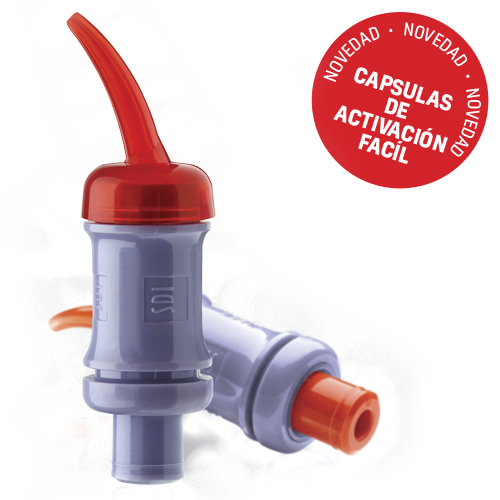
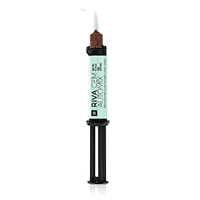
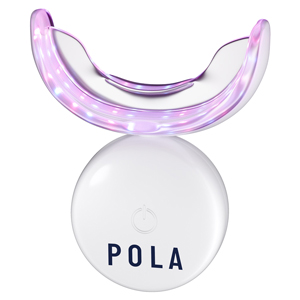
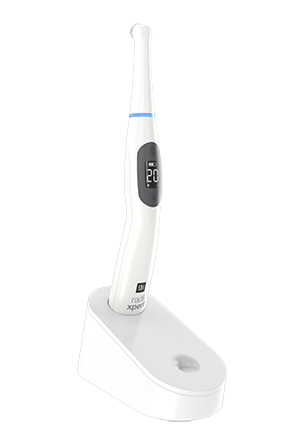
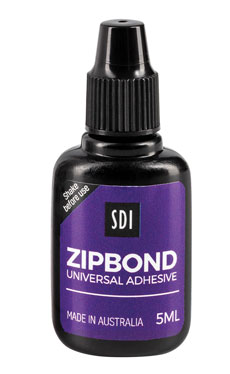
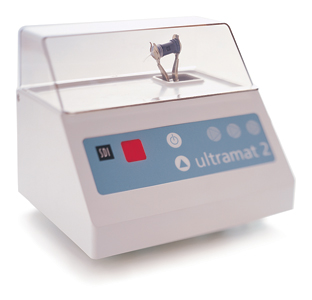


 Central/South America -
Central/South America - 
